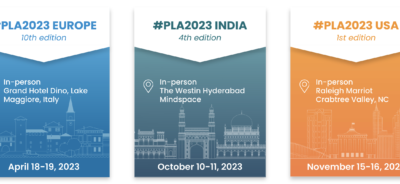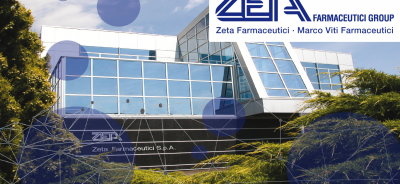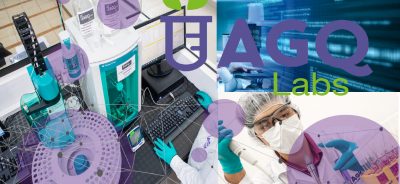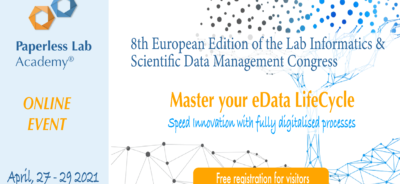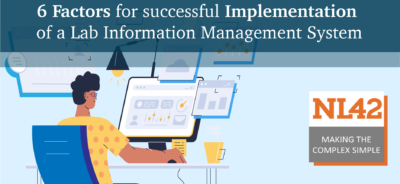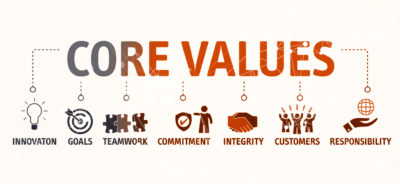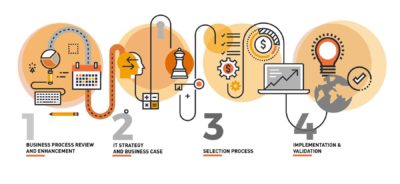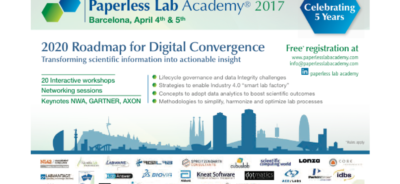Selection Process II: 5 steps in the selection of a LIMS
As mentioned in our previous article about How to select a LIMS, it is highly recommended traveling the path to reduce the emotional part of the purchase and select the right tool with the end in mind. These are the 5 steps to minimize the risk of failure in selecting a digital tool for your laboratory processes.
5 steps to select your data management solution
In this article, we start with the assumption that you have walked your way to define your best fit to purpose solution by first mapping your processes, identifying your gaps and defining your “must have” requirements.
In a whole digital transformation project, these 5 steps are the recommended ones when you have reached the moment to seek for the right solution.
If you opt for some consultancy support, these are the steps you should expect us to take you through for selecting your laboratory data management system.
Step 1 in the selection of a LIMS: User Requirements Specification
Since the knowledge on available solutions in the market might sometimes be limited, it is highly recommended not to assume anything and never limit ourselves in putting down the so called “wish-list”. Even though it is sometimes easier to understand what you would not like to have rather that what you´d like to have, the user requirements document should collect all aspects that you´d like to see in the product but also the key points you need the company provider to fulfill adequately in order to trust on a long term B2B relationship.
The goals of this document are from one hand to define in the most accurate way what the system should do to satisfy the business and technical needs but also to describe the requirements for a satisfactory implementation.
The URS (User Requirement Specification) sets the scope of the project, provides references of the international, national and internal regulations that govern your company (i.e. industry, customers, auditors), sets the major benefits expected after the implementation of the selected solution and lists a set of categorized requirements. Requirements categories should include but not limited to:
- System and capacity requirements
- Corporate requirements
- Regulatory requirements
- Workflow requirements
- Interface requirements
- IT Support requirements
Step 2 in the selection of a LIMS: Request for Information
Once the URS are agreed amongst the team and stakeholders, it is time to reach out and call for an RFI (Request for Information). The RFI usually presents to the candidates the project scope, objectives and requirements categories along with the rules and expected timing of the selection process. The RFI goal is to perform an initial market assessment to identify the products and companies that would be able to deliver a satisfactory solution. As such we do align a set of 30 questions about the company and 50 about the product. The answers are evaluated and rated while questions are weighted in relation with their impact on the customer business activities and project goals.
At this stage we do realize a very open search that could end in having 30 or more companies applying to the RFI. Even though the outcome is quite exhaustive, this first summary is very much appreciated as it gives a good comprehension of the market offering. As mentioned in the previous article:
“It is always a strong surprise for us to realize how little is known about the lab informatics industry by the potential buyers. Some providers considered as global market leaders are not even named in selection processes because their local presence is limited and their marketing strategy doesn´t reach them.”
From this first step, at least 3 solutions should be identified to move ahead in the selection process.
Step 3 in the selection of a LIMS: Request for Proposal
The final candidates selected from the RFI are then contacted to fulfill the Request for Proposal. The goal of the RFP is to receive a firm commitment from the vendors on the financial impact of the project and a clear definition on how the solution would be implemented. Further details are required from previous items mentioned in the RFI to gain granularity on technical aspects and also clear understanding of the level of commitment from the vendors with their project plan proposal. The information facilitated in the RFP should provide the basis of the final contractual agreement.
Step 4 in the selection of a LIMS: Demo Script
Meanwhile a technical presentation is arranged allowing the team to touch the solution and meet the vendor company. Since 3 to 4 demonstration sessions have to be planned in a reasonably short time frame, a demo script is highly recommended for the following benefits:
- Limit the vendor demo to the items of customer interest
- Concentrate the attention of the attendees to the listed items
- Facilitate a methodology to record if and how items have been demonstrated, seen and understood
- Facilitate a methodology to rate every item
The goal of a demo script is to remove, as much as possible, the emotional part of the technical presentations. By using a demo script, the different solutions are evaluated using the same principles.
Step 5 in the selection of a LIMS: negotiating and closing the contract
The goal of this last step is to sign a contract with the selected candidate that removes the typical ambiguities of the project implementation. The scope should be clearly defined, the costs and timing should be clearly stated in the contractual agreement. This is achieved by using the information provided by the vendor in the previous phases of the selection process and incorporate them into the contract. How product licenses are deployed and how implementation services are delivered should be mutually agreed. Payments should be clearly linked to project deliverables
Fact is that the benefits of running thought these steps are multiple:
- Market search is performed after that project scope and user requirements are clearly stated
- Vendors are evaluated based on their ability to support the customer, rather than their marketing efforts
- Vendors’ responses are measured using a unique approach
- Technical presentations are realized using the same approach
- The contract is signed largely reducing the ambiguities
Looking for some support on your selection process? Contact us and discover how we can help you.



